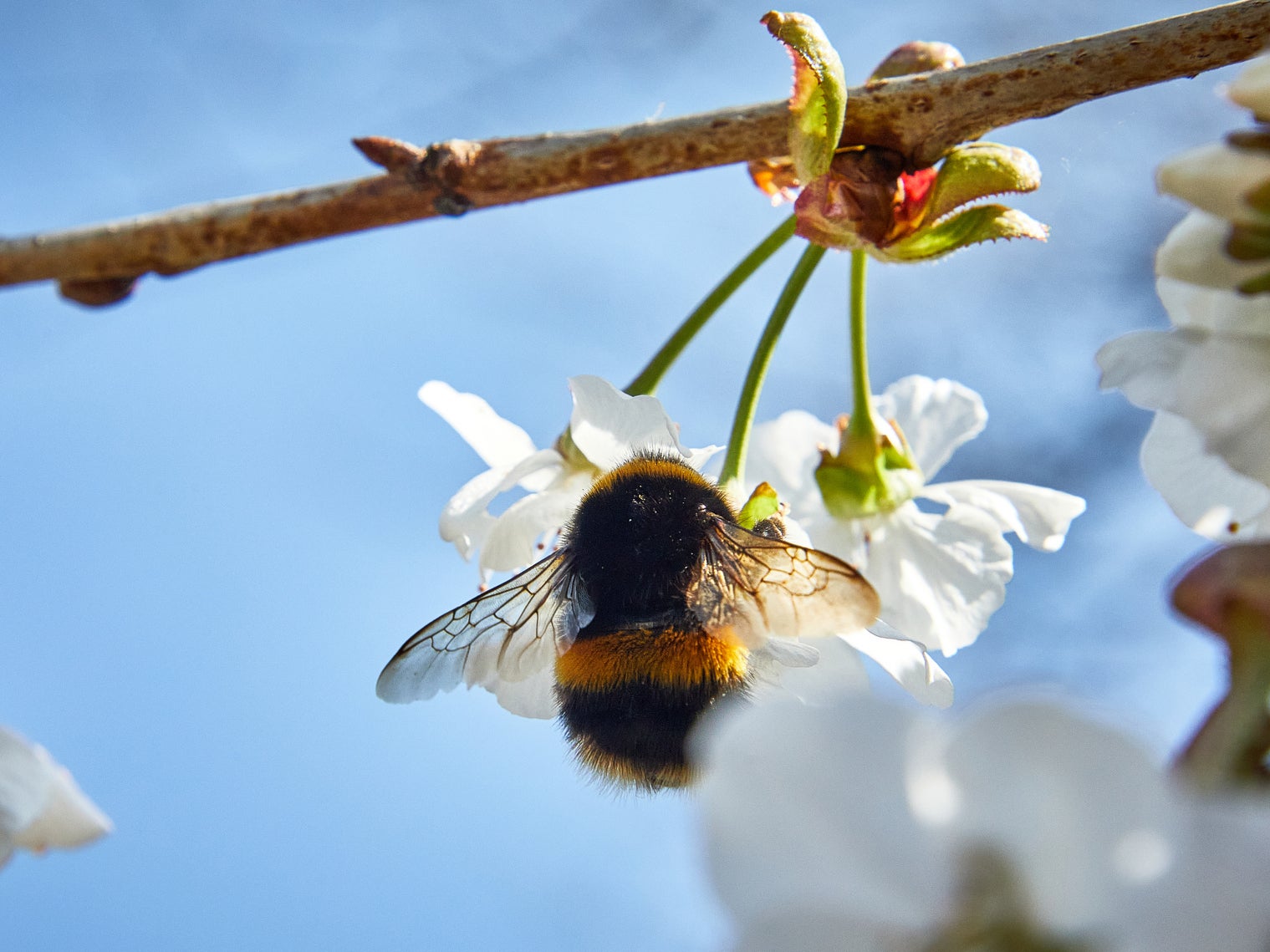Larger bumblebees prefer to forage earlier in the morning, study reveals
Bigger bees have bigger eyes, and can see better in low light, scientists say
“The morning has gold in its mouth”, is the Italian equivalent of “the early bird catches the worm”, and this beautiful adage could certainly be applied to larger bumblebees, who, a study has revealed, are earlier to rise than their more diminutive relatives.
The larger the bumblebees grow, the more likely they are to go out foraging for pollen and nectar in the low light of early dawn, researchers at the University of Exeter have found.
The team of scientists used RFID (radio frequency identification) - similar technology to contactless card payments - to monitor when bumblebees of different sizes left and returned to their nests.
The biggest bees, and some of the most experienced foragers, as measured by the number of trips out, were the most likely to leave in low light.
The scientists said that the earlier the bees leave their nests, the greater the risks to the bees are, as bumblebee vision is poor in low light, so flying at dawn or dusk raises the risk of getting lost or being eaten by a predator.
However, there is a considerable tradeoff as the bees not only benefit from extra foraging time and fewer competitors for pollen in the early morning, but eating more allows them to grow bigger - including growing bigger eyes.
“Larger bumblebees have bigger eyes than their smaller-sized nest mates and many other bees, and can therefore see better in dim light,” said lead author Katie Hall of the University of Exeter.
“We might expect all bumblebee foragers to leave the colony to forage as soon as there is enough light to allow them to fly.
“In fact, colonies seem to regulate the start of foraging.
“There is a balance of risks and rewards in low light - and most bees wait for higher light levels when they can see better and fly faster, with less risk from predators or getting lost and running out of energy,” she said.
“Our finding that more experienced bees are more likely to fly in lower light suggests that knowledge of food locations helps them navigate safely.”

The study tracked the bees’ behaviour over five days during warm periods of the flowering season, the researchers said.
Only a small proportion of foragers left the colony at dawn when light levels were still below 10 lux - which is quite dark.
The research is published in the journal Ecology and Evolution.
Join our commenting forum
Join thought-provoking conversations, follow other Independent readers and see their replies
Comments
Bookmark popover
Removed from bookmarks